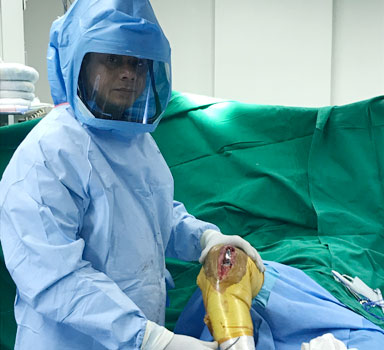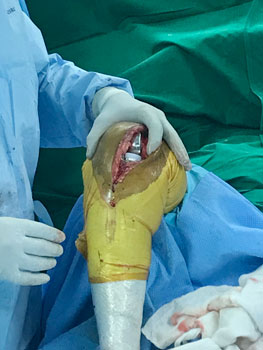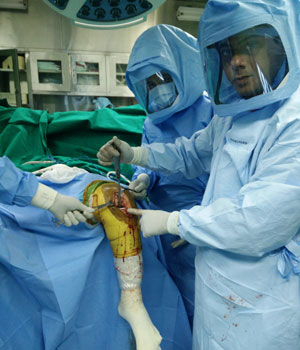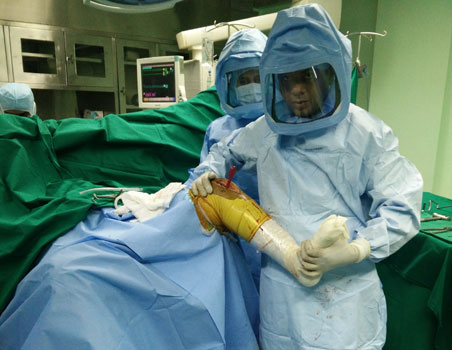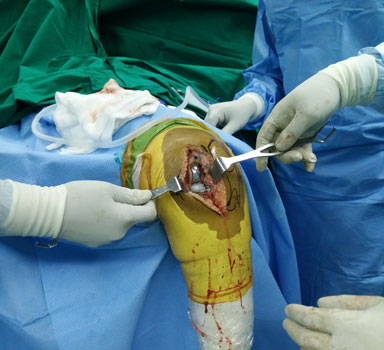During Partial Knee Replacement Surgery
In the Operation Theatre Complex:
Orthopaedic Surgeon in Mumbai, Dr. Amyn Rajani prefers to operate early in the morning, hence you will be wheeled in to operation theater at about 7.45 am.
The anesthetist will evaluate you and make you comfortable. After which fluid drips will be given.
During Anesthesia:
We use a combination of Spinal Anesthesia and Femoral Block for Unilateral Partial Knee Replacement and a combination of Spinal and Epidural Anesthesia for Bilateral Partial Knee Replacement. You will be made to sit with your back facing the Anesthetist so that your back can be cleaned and draped before injecting the Anesthetic injection.
Spinal Anesthesia given before Partial Knee Replacement Surgery As soon as Spinal Anesthesia is given your limbs become numb and your are made to lie down.
Femoral Block:

Femoral block is being given in the operated limb after surgery. This is a very safe and effective way of managing post-operative pain. The catheter is connected to an electronic pump which continuously provides pain relief to the operated limb over a period of 48 hours.
Our teams of anesthetists are very well trained and hence when the spinal and epidural injections are given in your back, you may feel minimum or no pain at all. The epidural catheter is left in the epidural space and is connected to a pump externally, which gives pain medications at regular intervals. The catheter is normally removed after 48 hours. As soon as Spinal and Epidural Anesthesia is given, your limbs become numb and your are made to lie down.
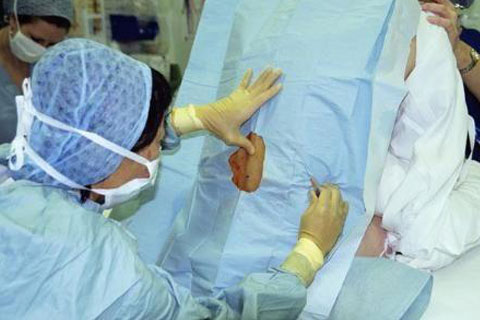
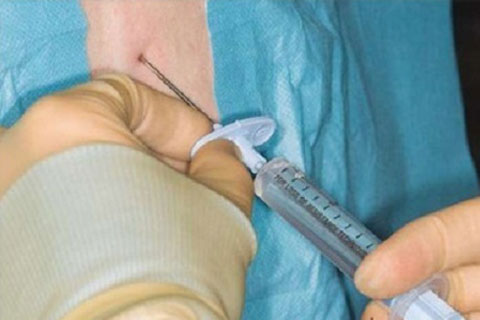
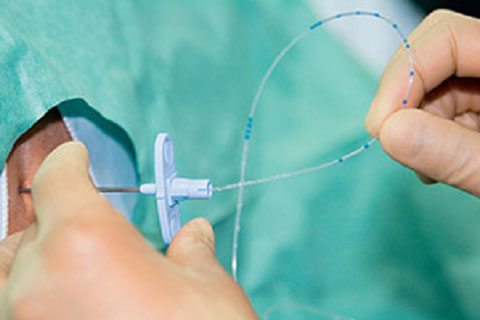
Combined Spinal and Epidural Anesthesia is being given for a Bilateral Knee Replacement
Catheterization:
Urinary catheterisation is done to monitor the urinary ouput during the surgery as well as after the Partial Knee Replacement Surgery. The catheter is removed at 48 hours after the surgery.
Preparation of the limb before the surgery:
Inflatable cuff attached to an electronic tourniqet machine is applied to the thigh to prevent intra-operative bleeding by increasing the pressure. Limbs are then scrubbed thoroughly by an assistant surgeon, to prepare it for painting and draping.
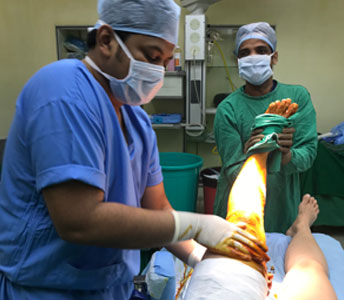
Surgeon's Preparation:
Before beginning to scrub the surgeon wears the body exhaust mechanism attached to a battery. This system is then covered with water impermeable hoods, so that no part of the surgeons body is exposed. This is an international protocol followed by all joint replacement surgeons.
After thorough scrubbing the surgeon is helped by the staff nurse to wear the hood gown and gloves. It is mandatory for all the assistants to wear the body exhaust mechanism or space suits and water impermeable gowns.
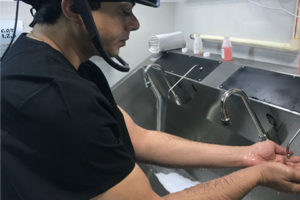
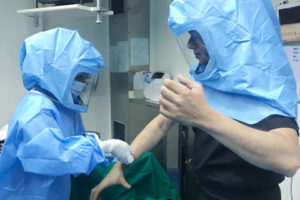
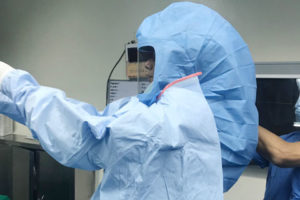
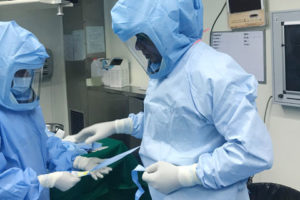
Painting and Draping:
The operated limb is then painted and draped according to the international protocol.

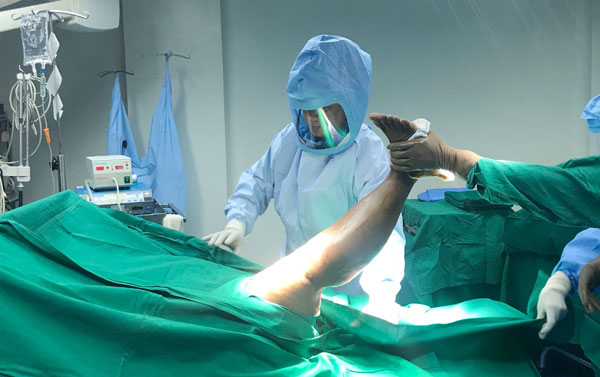
The Surgery:
Before elevating the tourniquet pressure, an intravenous antibiotic is given to the patient by the anesthetist. A 10-15 cm midline skin incision is made on the Knee. The Vastus Medialis Muscle is then divided and this division is extended distally to the medial patella retinaculum and medial side of the patella tendon. The Knee Joint is now exposed and the synovial fluid is removed by the suction. The patella along with the muscles is now moved to one side and the damaged tibial and femoral surfaces are exposed. The damaged surfaces of the femur, tibia and patella are removed with the help of a battery operated saw, using specialized jigs. The ligament balancing between the inner side (Medial Collateral Ligament) and the outer side (Lateral Collateral Ligament) is now done. A Sizer is used to measure the exact size of the implant required for these cut surfaces.
A trial implant is then fitted to confirm the size. The Knee Joint is now bent and rotated to make sure it is stable and moves smoothly. The final implant of appropriate size is then unpacked from a sterile box. Biological cement is used to fix the implant on the cut surfaces of the femur, tibia and patella. The tourniquet is released so that active bleeders can be cauterized, to prevent a blood loss and or haematoma. A good wash is given by jet lavage before putting in a negative suction drain in the joint. The muscle and subcutaneous layers are approximated and sutured by dissolvable sutures. The skin is closed by metal clips. A thick wool and crepe bandage is applied to the Knee and this stays in place for no more than 48 hours.
